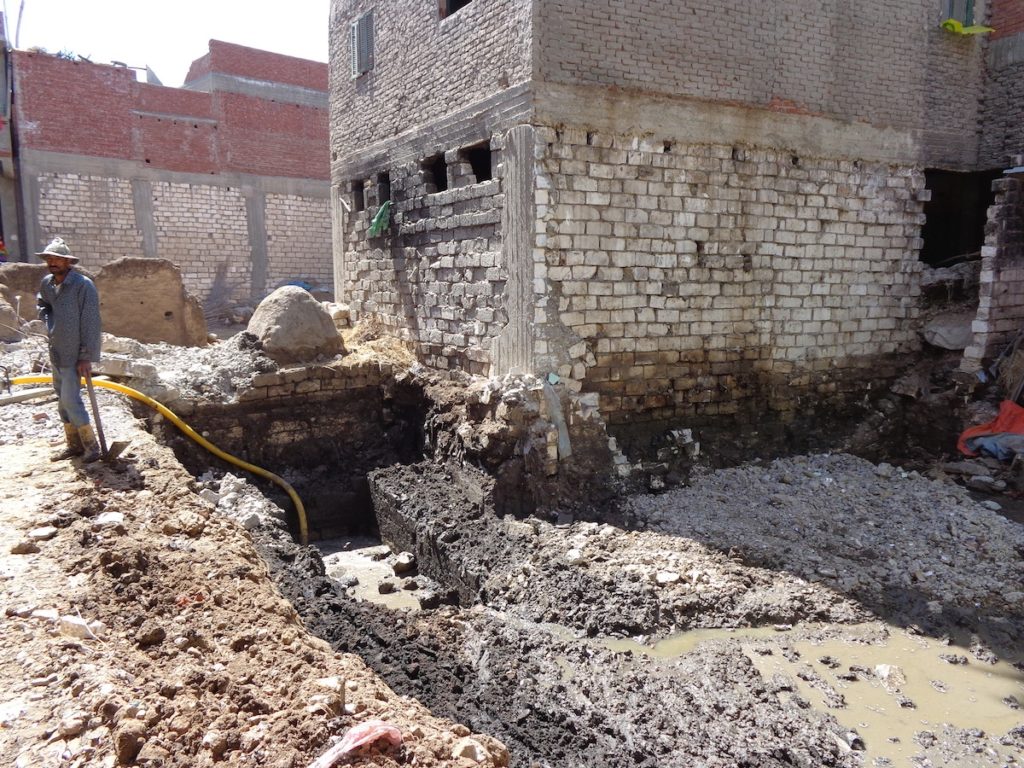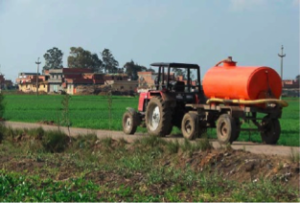“Participatory” water and wastewater governance: an enabling development approach...or business as usual?

Blog Post written by: Mohamed Hassan Tawfik
Citizens’ participation in water resources management is a buzz word that has received attention from donor organisations and governments. Participatory approaches are implemented in countless development projects and programs, particularly in developing countries. But the question is, what sort of “participatory” governance do we need - as development professionals in the water sector - to achieve development goals (e.g. SDG 6)?
I can summarize the answer of the latter question in two words: empower and in-power. The “Noble” objective behind participatory water governance is to empower usually excluded actors and give them the chance to have their voice heard on how their share of water is managed, and how to ensure safe sanitation services that will improve their health and environment. Unfortunately, it is often the other way around, where in-power actors exhaust other actors in extended participatory processes (e.g. meetings, workshops, focus groups…etc.) to legitimize their pre-determined decisions and give it a democratic “make-up”. For that reason, many researches are dedicated to exploring a scientific way to achieve an empowering participatory process that would replace processes that entrench the hegemonic role of powerful actors.
Among these researches, is the attempt to evaluate participatory processes. However, the evaluation of such governance approaches are problematic because it is hard to agree on one set of criteria that reflect an efficient and successful participatory management process. It is established in the literature that participatory processes are efficient when citizens’ engagement is ‘as far up the ladder as possible’. The “ladder” here refers to (Arnstein, 1969) seminal work “A Ladder of citizen participation”.
Arnstein argued that ‘there is a critical difference between going through the empty ritual of participation and having the real power needed to affect the outcome of the process’. Accordingly, Arnstein introduced the “ladder”, where its rungs are divided into three levels: The lowest level of the ladder offers non-participatory citizens involvement. As citizens go up the ladder, they start to claim more influence on the decision making until they reach “citizen control” where they initiate and take the lead of the decision-making process. A point where governance of water resources reorients from top-down to bottom-up.
Accordingly, development programmes rushed to put citizens high in the ladder. However, this was not reinforced with the necessary legal, regulatory and policy support to facilitate this huge change in water governance; and most importantly, these attempts did not show a dedicated effort to identify all the possible stakeholders. Therefore, case studies from various participatory exercises showed no correlation between participants rank in the “participatory ladder” and efficiency and/or success. The real questions were therefore, how to make participation work, and what type of participation would fit to which context.
Deciding “what works” for each context is a tedious – resources consuming task that is unfeasible for development projects with limited budgets and timelines. Also, the long and slow process of understanding the context is a disadvantage that makes policy-makers avert from participatory decision-making processes. Accordingly, there is a need to identify a set of elements that – if exists - will increase the likelihood of participation process efficiency and success in achieving outcomes.
We need to provide planners with further implementation and planning tools that would create an “Enabling Environment to Participation”, a term that is not explicitly mentioned in the literature, but in many articles, researchers mentioned the need for environment that enable participation efficiency. The “Enabling Environment to Participation” is in no way the “silver bullet” that will solve the participatory governance dilemma. However, it would act as the “incubator” where participatory processes would find the optimum conditions to growth and efficacy.
One of the main pillars to create an “enabling environment” is the identification of stakeholders based on their roles, not only in the “formal” water and wastewater sector (such as ministries, companies, regulatory authorities…etc), but also in the “informal” one. This particularly applies to developing countries where the influence of “informal” actors might exceed that of the “formal” ones.
In developing countries there is a shortage in water and wastewater infrastructure and services that prompt local actors to take matters into their hands and find solutions to these urgent needs. My research experience in Egypt’s rural areas in the Nile Delta, where the level of connection to sanitation services is still below 60% in rural areas (the government is working hard to provide this service), made it clear for me that although the country bears the responsibility to provide these basic services (according to the Manual on the Human Rights to Safe Drinking Water and Sanitation), it is a gigantic task that requires investment beyond its current capability. To attend to this gap, local citizens developed their own “informal” sanitation systems. Such as bayaras (locally built unsealed septic tanks), and shallow sewerage networks that discharge illegally in the closet watercourse. Although, these systems carry substantial health and environmental risks, but what are the alternatives?



Accordingly, the role of those local actors in their communities has been transformed from a passive role to an “executive” role of “influencers” who attain to basic needs that affect the livelihood of the community as a whole. Furthermore, during my interviews in some of the Nile Delta villages I was able to recognize groups of unidentified stakeholders who carry out daily operation and maintenance tasks as well as conflict management, tariff setting and fees collection for simple sanitation technologies that serve a wide range of the Delta population.
In a more academic explanation, I found a comprehensive “institutional arrangement” that operates through the norms of the community itself. Yet these groups are not involved in most of the on-going/planned development projects in the area.
Ignoring those actors from an assumed “participatory” governance processes will certainly limit the degree of success and further exclude and marginalize influential stakeholders’ groups. Finally, this might entrench the role of those in power, rather than empowering those who are often marginalized.
